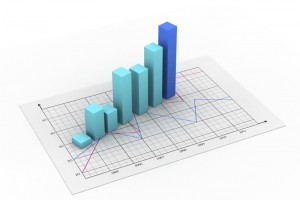
The topic of Marketing Accountability is very hot right now. Also known as Marketing Measurement or Marketing Attribution, it looks at how brands can demonstrate the value of the marketing programs they put in place and execute.
In order to demonstrate this value, organizations often use software or programs that are based on analytical techniques - such as attribution, model scoring, forecasting, and optimization. This piece looks at how we believe programs used to measure marketing will continue to increase in popularity as more and more marketing departments at global brands are measuring everything they do inside of the marketing department.
With that backdrop, I found the trends indicated in the marketing analytics portion of the 2015 CMO Survey, intriguing, specifically three items:
- Marketing analytics spend will increase 3 percent over next 3 years (the italics are mine).
- Marketing analytics usage by project has decreased to 29 percent, down from 32.3 percent.
- Only 30 percent of all companies evaluate marketing analytics quality.
And, interestingly, while organizations seem to use marketing analytics for customer acquisition and retention, social media, product optimization, and multichannel marketing, they are using it less frequently for promotion strategy, marketing mix, and to serve recommendations (next best actions or offers).
So marketing analytics spending is going up, but usage is going down. And those who do use it are limiting the scope to tactical projects. Why? There may be several reasons, but most of them point to a common theme: Marketing accountability. Analysis associated with large data volumes is complex. Managing, cleaning, and processing the data are arduous tasks. But poor-quality data generates analytical results that are equally deficient. The fact that only 30 percent of all companies are quantitatively measuring the quality of their marketing analytics tells me that gut feel marketing still rules in far too many places.
Here’s where the accountability comes in. If marketers are relying on instinct instead of analytics to plan and execute marketing programs, then it’s likely they are not applying marketing analytics to measure results either. All that marketing analytics software simply becomes “shelfware.” That also suggests that marketers never truly optimize their programs for the best results. And if programs go awry, they won’t understand why. Here’s the conundrum: If you aren’t measuring your marketing, you can’t be held accountable for poor results. But while marketers insulate themselves from bad news, they also are limiting their ability to credibly present superior results and exceptional marketing programs. And replicate them.
Having an accurate barometer to measure your marketing gives you the power to know exactly how your marketing programs are performing – from inception through completion. Accountable marketers can always measure their worth and understand exactly the equity they provide, not only to the marketing department but also to the organization at large.
Will the Trend Continue?
I don’t believe that the use of marketing analytics software will continue to decline, for the following reasons:
- Marketing analytics is becoming more accessible. Vendors are embedding more analytical routines into the software, making discovery more accessible. For example, the latest data visualization software from the top vendors in the space supplies an array of wizards and callouts to assist marketers in using analytics in reporting.
- Young marketers are more analytics–savvy. Increasingly, students fresh out of universities are trained to incorporate analytics into projects and programs. Universities such as Stanford, North Carolina State, and Louisiana State, and many others are graduating students with Master of Analytics degrees.
- More firms are helping brands prove the value of their marketing software investments. It’s important to be able to demonstrate that marketing analytics software aids organizations more than it highlights deficiencies. Forrester Research’s Total Economic Impact studies, for example, highlight the value and return on investment of marketing analytics software.
With the right people, processes, and software in place, along with easier ways to measure value, analytics will become engrained into marketing organizations. And marketing analytics programs will be run by teams who are very comfortable with analytics.
At SAS, we use marketing analytics to measure digital marketing campaign activities. To better understand web behavior and navigation patterns, data is collected at the individual customer level and analyzed for information like number of downloads by individual, time spent viewing digital content, and even search terms by individual.
Using this information as selection criteria for marketing campaigns has allowed campaign performance metrics to increase significantly. Response rates by campaign are up 400 percent. The use of customer level data has helped online campaign goals (i.e., signing up for a webinar or downloading a paper) to increase by 13 percent. And by understanding reasons for customer abandonment (leaving the website), more effective remarketing to those customers has resulted in a 6.6 percent overall campaign lift.
With solid metrics like these, marketing leaders at SAS have no problem funding the next big marketing program, because they know they will be able to analyze, measure, and understand if their programs are a success.
So, going forward, the topic of marketing accountability will only increase in importance because marketing analytics affords organizations the opportunity to know things they simply never could before. And as all business becomes more data-driven, the marketing department that embraces marketing analytics becomes more accountable and therefore more valuable to the enterprise. And that trend is decidedly going up.
Editor's note:
This content from Jon originally appeared on Data Informed as, “Use Data to Measure, Track Marketing Success.” Details on the analytically-driven marketing solutions Jon refers to can be found at www.sas.com/customerjourney. Check it out and let us know what you think!
